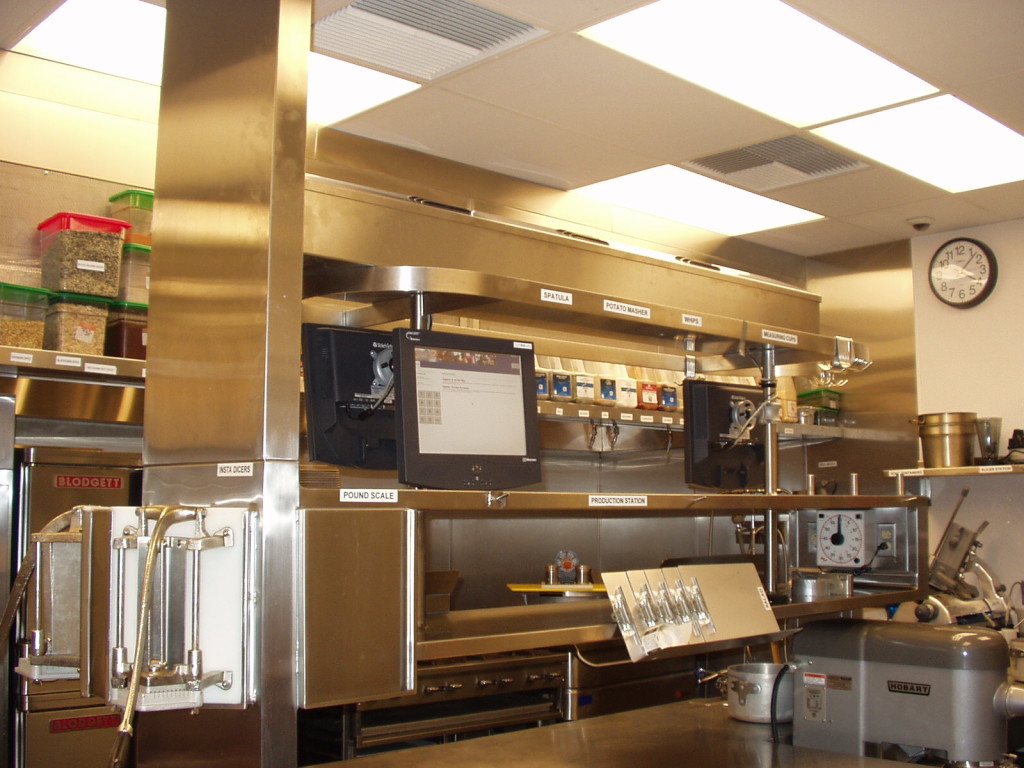Everyone wants to get the most out of their POS investment. A way to do this is to have printers, screens, and terminals in the kitchen that allow the servers to communicate orders to the kitchen quickly and efficiently. The kitchen, however, is the roughest area of the restaurant on the equipment. If the hardware is damaged or not working properly, your bottom line is affected. Here are 8 ways to make sure your investment continues to work for you:
Make sure paper is in the printer before peak hours: You are in the midst of the lunch rush; orders are popping out of the printer left and right. Next thing you know, the printer stops printing. The little green light indicates it’s out of paper so your line cook rushes to swap paper out, exposing the delicate working parts of your printer to flying grease, liquids, and other contaminants. Simply by making sure your printer has enough paper to make it through your rush hours, you will help keep harsh elements out.
Purchase industry-hardened hardware: Whether you’re replacing old kitchen hardware or installing hardware for the first time, you will have several choices to make. You should purchase the most ruggedized hardware you can. By installing ruggedized hardware, you are already giving yourself the advantage of having hardware that was designed to withstand harsh environments.
Keep screens high and out of splash zones: If your screens don’t need to be close to the action, don’t put them there. Think of all the things going on in a kitchen that you wouldn’t want to subject personal electronics to: grease splattering, liquids spilling, food is flying, and messes happen. By putting your monitors higher or out of the way, you are ensuring they will steer clear of all the mess going on below.
Keep any printers out of spill-prone areas: If you depend on kitchen printers, you also want to make sure these are as high and out-of-harm’s-way as possible. You don’t want to position a printer in the same area as your serving area or any prep area, and the higher you can install it, the better. Additionally, you don’t want to have the printer behind the server pick-up area, either, as spills and splashes often occur here. You also want to make sure there are dedicated channels and drainage areas to help direct water away from any technology. By positioning your printer in an area you know will stay dry and grease-free, you are helping it stay alive longer.
Keep all hardware clear of heat and steam: One of the most treacherous aspects of the kitchen for any piece of hardware is the heat that happens. No hardware works well when exposed to unusually high temperatures, so keeping all hardware away from the grill or cooking surfaces helps prolong its usable life.
Do preventative maintenance: Hardware in the kitchen has a shorter lifespan than elsewhere in your restaurant, but it’s often pieces and parts that start to fail that lead to total failure. By periodically investing small amounts on your kitchen equipment, you can prolong a large sum replacement for some time.
Clean and spot-check at the beginning and end of every shift: Clean hardware is happy hardware. Taking a minute to clean your kitchen hardware and doing a visual inspection at the beginning and end of every shift will help keep it in working order and will help you identify when you need to perform any maintenance sooner. It will also help you pinpoint when problems occur to help expedite repairs and keep costs down.
Work with your POS partner to develop a maintenance schedule: When working with a reputable POS provider, you will likely have the option to enter into a service agreement. By entering into an agreement like this, you can subscribe to a schedule of maintenance to help prolong the life of your hardware. Agreements like these definitely cost a bit more than doing nothing, but substantially less than having to replace all of your kitchen hardware.
Do you have any ticks or tips to help prolong the life of your kitchen hardware? We’d love to hear what you do! Let us know in the comments.


[…] has been a long debated topic about how much touch technology can actually survive in the kitchen. After all, it’s an […]